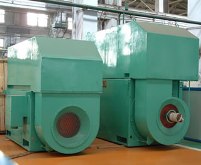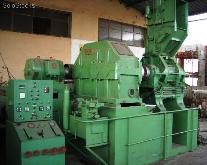The influence of power quality on the performance of electric motors
 One of the main conditions for ensuring the normal operation of electric motors is their power supply, the parameters of which meet certain requirements for its quality.
One of the main conditions for ensuring the normal operation of electric motors is their power supply, the parameters of which meet certain requirements for its quality.
The main thing power quality indicators (PQI) related to parameters such as frequency and voltage deviations, voltage fluctuations, non-sinusoidal and voltage unbalance. In order to avoid long-term disruption of the normal operation of electric motors, the main PQEs should not exceed their normal values, but in emergency modes - outside certain maximum values. Consider how power quality indicators affect the performance of electric motors.
The reliability and durability of electric motors are greatly affected by their thermal conditions. So, for induction and synchronous motors, the effect of voltage deviation on their thermal conditions also depends on the motor load.Running electric motors at low voltage leads to overheating of the insulation and can cause damage. The fact is that when the voltage falls within normal limits (+ 10%), the rotor and stator currents increase by an average of 14 and 10%, respectively.
With a significant load on asynchronous motors, voltage deviations lead to a significant reduction in its service life. As the motor current increases, more intense aging of the insulation occurs. With negative motor terminal voltage deviations of 10% and nominal load of the induction motor, its service life is reduced by half.
 When the mains voltage deviates, the reactive power of synchronous motors changes, which is important when using synchronous motors for reactive power compensation. This applies entirely to condenser units. With insufficient reactive power generated in the network by synchronous motors, it is necessary to additionally use capacitor banks, which reduces the reliability of the power system by increasing the number of system elements.
When the mains voltage deviates, the reactive power of synchronous motors changes, which is important when using synchronous motors for reactive power compensation. This applies entirely to condenser units. With insufficient reactive power generated in the network by synchronous motors, it is necessary to additionally use capacitor banks, which reduces the reliability of the power system by increasing the number of system elements.
Voltage fluctuations, as well as voltage fluctuations, have a negative effect on the operation of electric motors. The electric valve drive is very sensitive to deviations in the voltage of the supply network, because the change in the corrected voltage leads to a change in the rotation speed of the motors.
In enterprises with their own thermal power plants, fluctuations in the voltage amplitude and phase resulting from voltage fluctuations lead to fluctuations in the electromagnetic moment, active and reactive power of the generators, which negatively affects the stability of the station as a whole and, therefore, its functional reliability .
 Non-sinusoidal modes have a noticeable effect on the reliability of electric motors. This is due to the fact that in the presence of higher harmonics in the voltage curve, the aging process of the insulation takes place more intensively than in the case of electrical equipment operating at sinusoidal voltage. So, for example, with a non-sinusoidal coefficient of 5%, after two years of operation, the tangent of the dielectric loss angle of the capacitors increases by 2 times.
Non-sinusoidal modes have a noticeable effect on the reliability of electric motors. This is due to the fact that in the presence of higher harmonics in the voltage curve, the aging process of the insulation takes place more intensively than in the case of electrical equipment operating at sinusoidal voltage. So, for example, with a non-sinusoidal coefficient of 5%, after two years of operation, the tangent of the dielectric loss angle of the capacitors increases by 2 times.
Voltage imbalance adversely affects the operation and service life of asynchronous motors. Thus, a voltage imbalance of 1% causes a significant imbalance of currents in the windings (up to 9%). Negative-sequence currents are superimposed on positive-sequence currents and cause additional heating of the stator and rotor, resulting in accelerated aging of the insulation and reduction in available motor power. It is known that with a voltage imbalance of 4%, the service life of an induction motor operating at rated load is reduced by about 2 times; with a voltage imbalance of 5%, the available power of the induction motor is reduced by 5 - 10%.
The magnetic field of the reverse sequence currents of the stator of synchronous machines induces significant eddy currents in the massive metal parts of the rotor, which cause increased heating of the rotor and vibrations of the rotating part of the machine. Vibrations can be dangerous to the machine structure if there are significant imbalances.
Heating of the excitation winding of a synchronous motor due to additional voltage unbalance losses leads to the need to reduce the excitation current, while reducing the reactive power supplied by the synchronous motor to the network.
Kireeva E.A.
